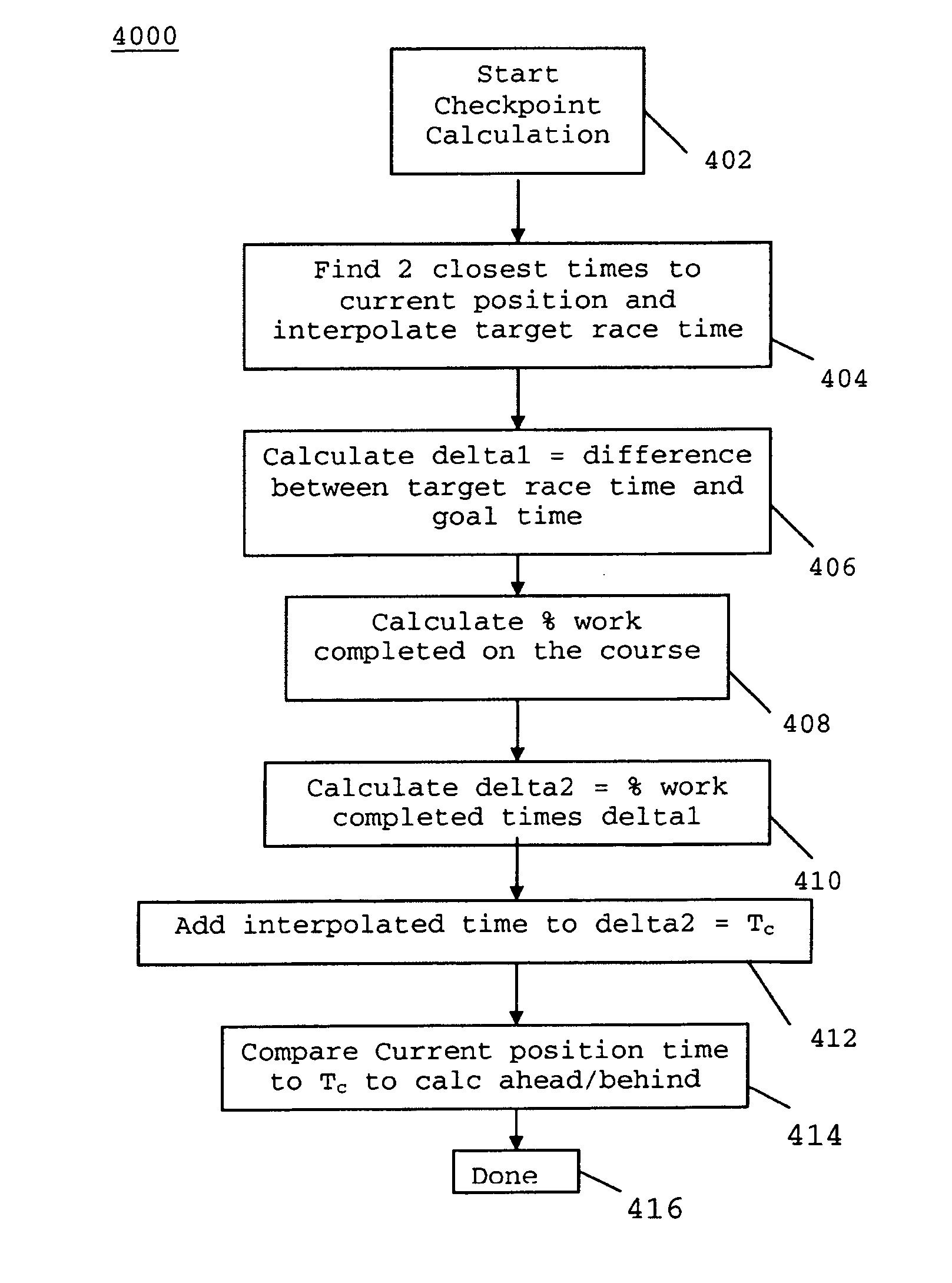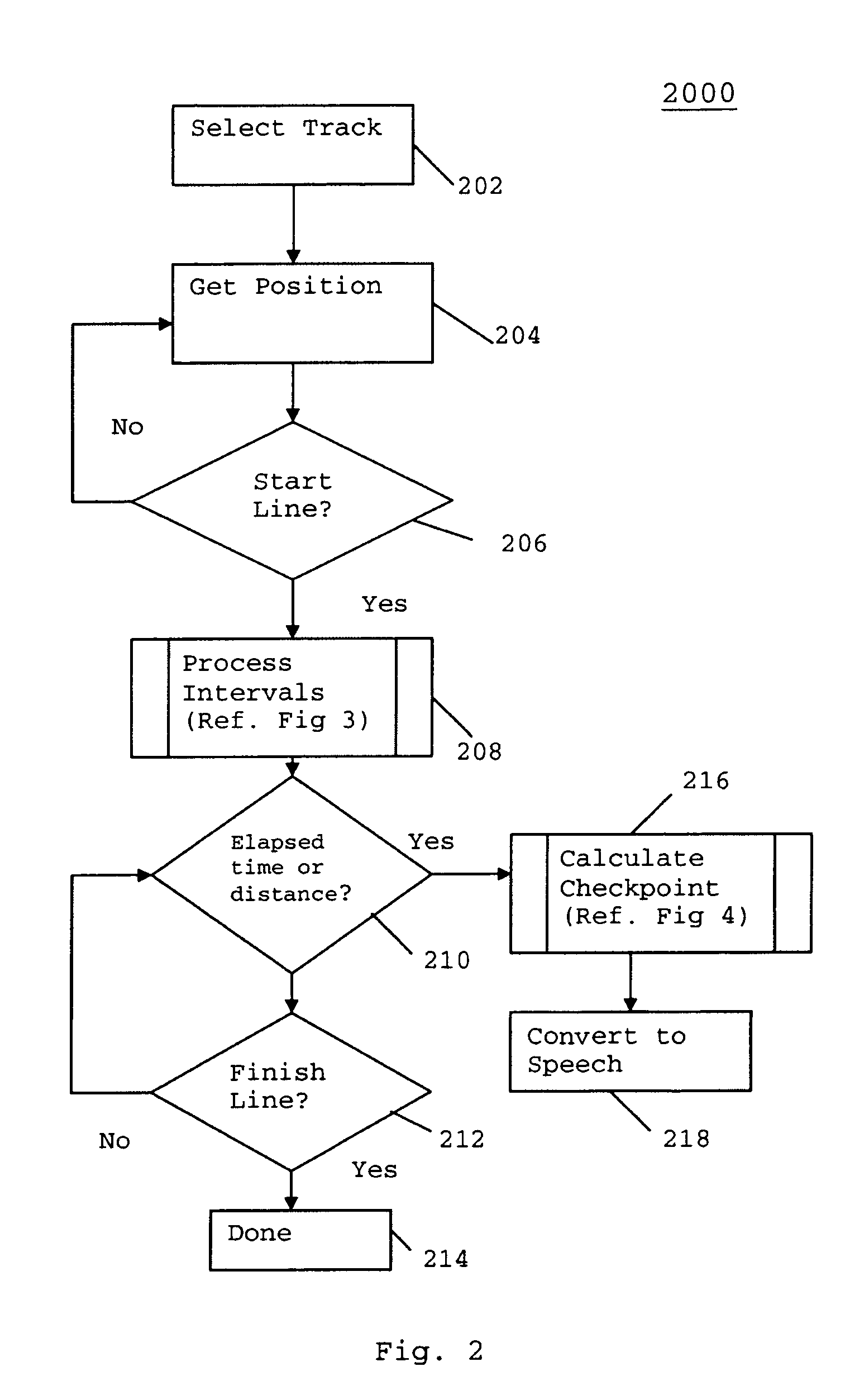System and methodology for endurance training
a training system and endurance technology, applied in the field of global positioning system (gps) type devices to enhance physical training, can solve the problems of not providing user feedback with respect, and achieve the effect of improving accuracy and convenient mounting to users
- Summary
- Abstract
- Description
- Claims
- Application Information
AI Technical Summary
Benefits of technology
Problems solved by technology
Method used
Image
Examples
Embodiment Construction
of algorithm calculations for a course with a user goal time set at 10 minutes 45 seconds and a target race time from previous profiles of 10 minutes 50 seconds is as follows:[0054]a) User time at a checkpoint ‘1’ position is 1 minute 10 sec[0055]b) Two closest positions to this checkpoint position and times interpolate to 1 minute and 5 seconds from the stored target profile.[0056]c) Next, calculation of ‘Delta 1’ between target race time and goal time is: Delta 1=goal time minus target race time. Thus, 10 min 45 sec. goal time minus 10 min 50 sec. target race time results in a value of minus 5 sec.[0057]d) Let's assume at this checkpoint that 80% of the course ‘work’ is completed, that is, the first part of course was hilly. Then ‘Delta 2’=80% (work completed) times minus 5 sec (Delta1) resulting in Delta 2=minus 4 sec. Thus, this 4 sec is the time needed to be made up by the user.[0058]e) At the current checkpoint the user time is 1 min 10 sec. Adding the interpolated target time...
PUM
 Login to View More
Login to View More Abstract
Description
Claims
Application Information
 Login to View More
Login to View More - Generate Ideas
- Intellectual Property
- Life Sciences
- Materials
- Tech Scout
- Unparalleled Data Quality
- Higher Quality Content
- 60% Fewer Hallucinations
Browse by: Latest US Patents, China's latest patents, Technical Efficacy Thesaurus, Application Domain, Technology Topic, Popular Technical Reports.
© 2025 PatSnap. All rights reserved.Legal|Privacy policy|Modern Slavery Act Transparency Statement|Sitemap|About US| Contact US: help@patsnap.com



